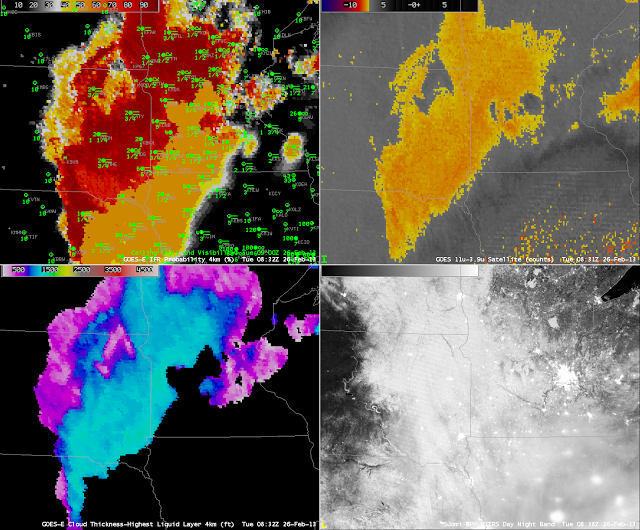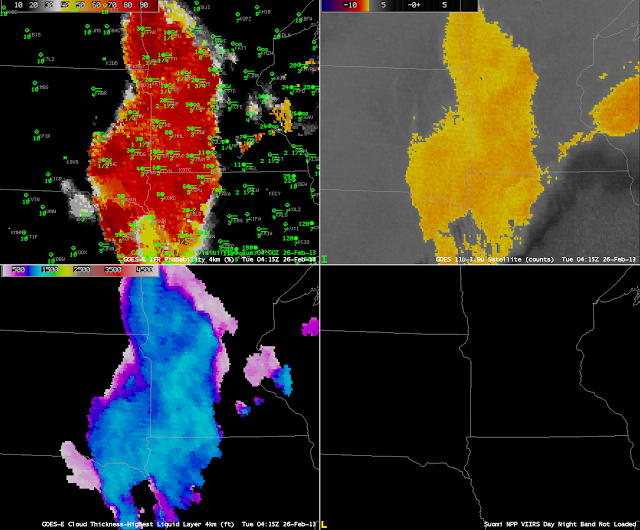Stratus and low clouds persisted over western Minnesota and the eastern Dakotas overnight on 25 to 26 February, and the GOES-R IFR Probability field ably captured the region of lowest visibility. Note that the IFR probability field extends into northwest Iowa (albeit with relatively lower probabilities). This is a region where high-level cirrus prevents the traditional brightness temperature difference product from giving useful information about the low levels. In this region, Rapid Refresh data are used to fill in information and more accurately capture the region of IFR conditions.
 |
| As above, but for 0802 UTC for GOES-East Products, and with the MODIS-based IFR probability field at 0801 UTC in the lower left |
GOES-R IFR Probabilities can be used with MODIS data as well, and the better resolution (1 km at nadir vs. 4 km at GOES nadir) means the MODIS fields have better small-scale detail. Note, for exanple, the sharper edge to the IFR probability field in east-central Minnesota.
 |
| As at the beginning of the post, except for 0415 UTC (top), 0432 UTC (middle) and 0445 UTC(bottom) |
Stray-light issues can influence the 3.9 µm imagery, and therefore the brightness temperature difference field, and therefore the GOES-R IFR Probability field. In the three images above, Stray Light is noteable in the 3.9 µm at 0432 UTC, but that erroneous information can be de-emphasized in the GOES-R IFR probability field because the Rapid Refresh Data in regions where Stray Light is present may show dryer low levels.



